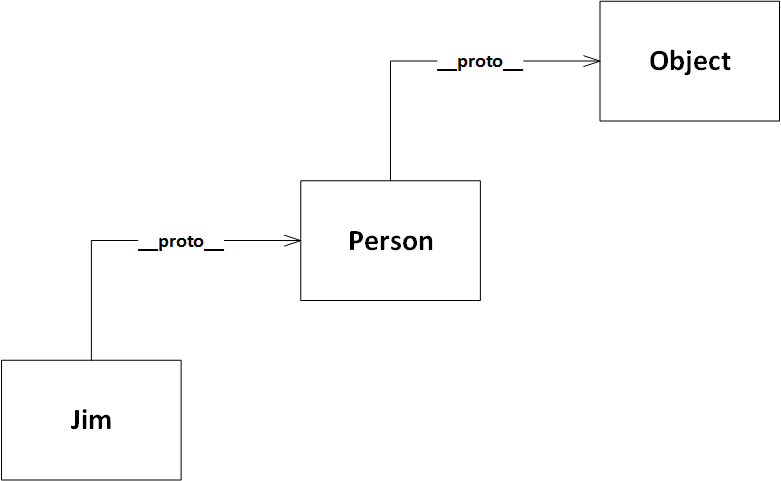<script>
function Person(name, age, street, city, state) {
this.name = name;
this.age = age;
this.address = street + ", " + city + ", " + state;
}
showline(Person.toString());
var Jim = new Person(
"Jim", "Old as the hills",
"Syracuse University", "Syracuse", "NY"
);
showline('var Jim = new Person("Jim", ...)');
showJSon(Jim);
putline();
showline("Showing properties from Jim and Jim.__proto__");
var inherited = true; // show prototype's properties too
showAllJSonFormatted(Jim, true);
putline();
showline("Here's Jim's prototype and its prototype, Object:")
showAllJSonFormatted(Jim.__proto__, inherited);
putline();
</script>
When processing a selection of a property or method, JavaScript looks first at the object, then it's prototype, and
then all the way up the prototype chain until it gets to Object.
